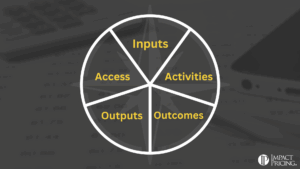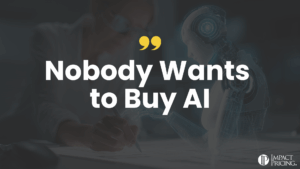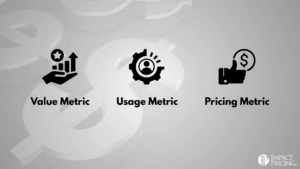You can listen to the full audio version of this blog we call — Blogcast.
Over the Fourth of July, I took a trip to the Midwest to visit family and friends. As usual, I couldn’t help myself. I asked nearly everyone the same question:
“How are you using AI?”
It wasn’t a trick question. I was genuinely curious how people from different industries and backgrounds are using this powerful new capability we keep hearing about.
The responses were fascinating.
Some people lit up with excitement. They had played with ChatGPT, watched a few YouTube demos, or heard how it might change everything. But when I dug deeper, very few (none?) were using AI regularly or meaningfully in their work. Most hadn’t gone past the occasional prompt.
This was striking to me because in my professional circles, especially among pricing professionals and SaaS leaders, AI is everywhere. We use it to model willingness to pay, to build pricing calculators, to generate content, to brainstorm segment strategies, and even to challenge our assumptions.
So why the disconnect?
Pricing Professionals Have a Unique Relationship With AI
Here’s my theory:
We’re not just using AI. We’re being forced to understand it.
Pricing people, especially those working with software, are being asked to price products that include AI capabilities. That’s not a surface-level question. It forces us to dive into what the AI actually does.
- Does it create real value for the user?
- Is it saving time, making better decisions, or just sounding smart?
- Should it be a new product tier, a feature, or a usage-based add-on?
- How do buyers perceive the AI, and what are they comparing it to?
In short, pricing AI forces us to study AI.
And in studying it, we become better users of it. We start using AI to help us price AI. It’s a feedback loop.
We’re Also Wired to Use It Well
There are two other reasons I think pricing professionals are ahead of the curve with AI.
1. We’re already systems thinkers
We’re used to breaking complex problems into components like features, segments, metrics, and value drivers.
AI is a natural tool for people who think like that. It works best when you give it structure, constraints, and clear goals. Those are things we do instinctively.
2. We talk to each other
The pricing community is curious and collaborative. We share prompts, tools, and workflows.
We learn fast because we’re not doing this in isolation.
But That Creates a Blind Spot
Here’s the twist.
Because we’re so immersed in AI, we overestimate how quickly it’s being adopted.
Yes, large software companies are moving fast.
Yes, startups are launching with AI at their core.
But most SMBs? They’re still catching up on CRMs, struggling with data hygiene, or trying to make sense of basic dashboards. AI is exciting but abstract. It is not yet a priority.
That doesn’t mean it won’t matter. It will.
But the adoption curve will be longer, messier, and more uneven than many of us expect.
Stay Grounded
If you work in pricing, you might be at the forefront of AI adoption. Not because you set out to be, but because your job demanded it.
That’s a huge advantage.
But it also means your view might be skewed. Don’t assume your colleagues, clients, or competitors are as deep in this as you are. Don’t let the AI hype bubble distort your sense of reality.
Instead, be the translator. Be the one who bridges the gap between curiosity and capability. That’s where the real value is.
The Midwest trip reminded me that not everyone is on this AI journey yet. And that’s exactly why we need to keep leading with clarity, not hype, and why we need to stay focused on value, not technology.
Share your comments on the LinkedIn post.
Now, go make an impact.
 Tags: Artificial intelligence, pricing, pricing foundations, pricing skills, pricing value
Tags: Artificial intelligence, pricing, pricing foundations, pricing skills, pricing value













